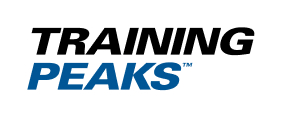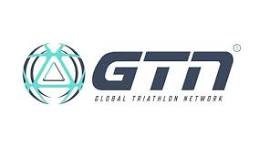How to Run With a Heart Rate Monitor
Training with heart rate is the fast-track way to boost your running run speed and stamina, while reducing the chances of injury…
How many of you own a nice shiny heart rate monitor (HRM)? Excellent, that’s a good percentage of you. Now, how many of you have spent the first three or four weeks playing around with the features like an excitable puppy before realising that it’s starting to resemble a bracelet – looks nice but is serving no practical function whatsoever?!
Don’t worry – I can help. And don’t worry about feeling a touch ineffectual. You’re not. You see, where once a heart rate device just showed the time and your heart rate, now even the most rudimentary watch seemingly comes with GPS, step counter and sleep tracker.
As for top-end tools like Polar’s Vantage V2 and Garmin’s 745, arguably, you need a master’s degree in physics before mastering the endless feature list.
So, I’m going to keep things as simple as possible by focusing solely on heart rate, and how you can maximise your monitor and your ol’ ticker to improve your running performance. But first, let’s talk accuracy…
Chest Strap VS Optical Sensor
The past few years have seen huge growth in the optical-sensor HRM market, the clear appeal of dispensing with a chest strap a strong one for many. The problem is, their accuracy remains indifferent. It’s down to heart-rate measurements from wearables deriving from photoplethysmography, an optical method for measuring changes in blood volume under the skin. That’s why issues stem from the watch being too loosely worn, skin tone (reportedly less accurate on darker-skinned athletes) and swift movements, like when sprinting.
Head-to-head tests have been on the reliability of the data being generated by chest and wrist-based approaches, and the two often produce similar numbers at lower-intensity training sessions. But the positives of a chest strap reveal themselves in high-intensity workouts especially, proving more accurate and less susceptible to random readings. Opticals are accurate enough for most, though you could always follow Olympian Molly Huddle, who completes most sessions with wrist optics, but wears a chest strap for harder efforts.
Managing Training Load
The main benefit of using an HRM is managing running intensity. By finding your maximum, you can then set training zones. You can then train to certain intensities for a period of time to hit specific physiological parameters, which optimise adaptations. I’ll explain more shortly but first, let’s find your maximum.
For years, before HRMs became commonplace, you’d determine your heart rate by deducting your age from 220. It was passable but not that accurate. With an HRM, you can be spot on. Here’s a couple of ways to find yours…
1. This is called the ’20min test’ where the aim is simply to run as hard as you can for 20mins. This is a maximum capacity test, which you’ll probably hit after 3mins. After 10mins, you’ll probably reach 95%. Keep going, keep pushing, until you’ve either completed 5km or the 20mins is up. This is your maximum heart rate.
2. Alternatively, you can do 4 x 2min runs at maximum effort with 1min easy jogging in between. Go as hard as you can for every interval. Come the final one, you’ll be as good as at your maximum.
Training Zones
Zone 1: 68-73% max heart rate
Performance benefit(s): Training at this aerobic intensity will boost your recovery and get you ready to train in the higher heart rate zones.
Zone 2: 73-80% of max heart rate
Performance benefit(s): Basic cardiovascular training at a good recovery pace. This is the intensity to improve aerobic capacity; i.e. stamina. Your body will get better at oxidising – burning – fat and your muscular fitness will increase along with your capillary density.
Zone 3: 80-87% of max heart rate
Performance benefit(s): Running in zone 3 is especially effective for improving the efficiency of blood circulation in the heart and skeletal muscles. This is the zone in which lactic acid starts building up in your bloodstream. Training in this zone will make moderate efforts easier and improve your efficiency.
Zone 4: 87-93% of max heart rate
Performance benefit(s): This zone will improve your anaerobic capacity, threshold and speed endurance. Your body will get better at using carbohydrates for energy and you’ll be able to withstand higher levels of lactic acid in your blood for longer.
Zone 5: 93-100% of max heart rate
Performance benefit(s): Training at maximum (i.e. interval training) will increase your anaerobic and muscular endurance, power and cardiovascular levels.
Balancing Intensity
How should you balance these intensities? That’s dependent on numerous factors like fitness levels, age, experience, injury history, weight and many more. But one proven method is polarized training. This is where you train for 80% of the time at low intensity and 20% hard (in zones four and five).
Training data from national and Olympic athletes suggests this mix maximises speed and stamina without overtraining and becoming ill or injured. To that end, also use softer terrain where possible to reduce stresses on your joints.












